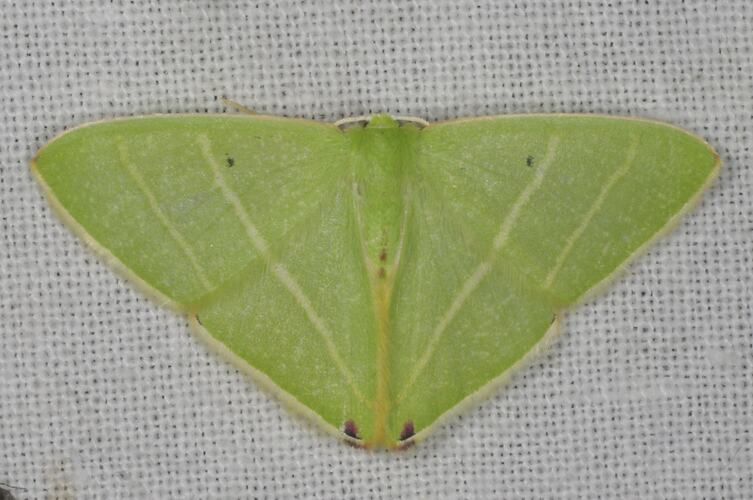General Description
When at rest the four wings together form a characteristic triangle shape, with line markings on fore- and hindwings combining to form an internal triangle. All wings are apple green. The forewings have two cream lines running across them, and the hindwings one. The resting moth is outlined in cream and there are distinct red and black spots at the tip of the hindwings. The body is green and the antennae are white. The wingspan of the male is 2.1 cm and the female 2.3 cm.
Biology
Caterpillars of this species have been recorded feeding on Plumbago. The species has been recorded at all times of the year in other states, but the flight times are not known for Victoria with records only for November and February. Victorian records are very sparse and more information is required to establish the actual distribution of the species as it may have a wider range than currently known.
Distribution
Found in forests from Queensland to Mitchell River National Park in Victoria.
Habitat
Rainforests and woodlands. Victorian specimens have been found in warm temperate rainforest gullies.
More Information
-
Animal Type
-
Animal SubType
-
Brief Id
An apple-green triangular shaped moth, edged with pale cream.
-
Colours
Green
-
Maximum Size
23 mm
-
Habitats
-
Diet
Herbivore
-
Endemicity
-
Commercial
No
-
Flight Start
January
-
Flight End
December
-
Taxon Name
-
Scientific Author
(Walker, 1861)
-
Common Name
Emerald
-
Kingdom
-
Phylum
-
Subphylum
-
Class
-
Subclass
-
Superorder
-
Order
-
Suborder
-
Superfamily
-
Family
-
Subfamily
-
Genus
-
Species Name
bipunctifera

